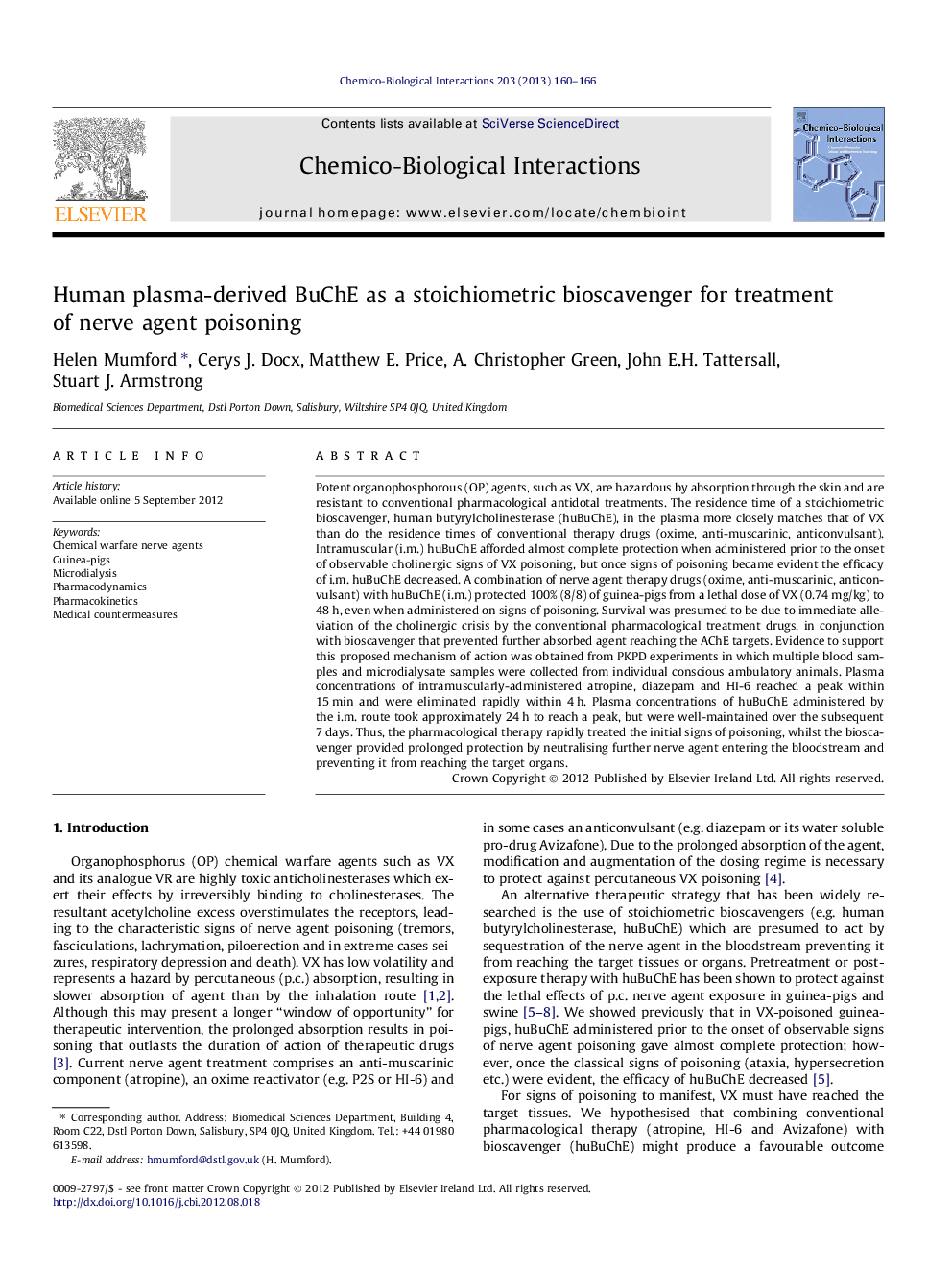| Article ID | Journal | Published Year | Pages | File Type |
|---|---|---|---|---|
| 5848321 | Chemico-Biological Interactions | 2013 | 7 Pages |
Potent organophosphorous (OP) agents, such as VX, are hazardous by absorption through the skin and are resistant to conventional pharmacological antidotal treatments. The residence time of a stoichiometric bioscavenger, human butyrylcholinesterase (huBuChE), in the plasma more closely matches that of VX than do the residence times of conventional therapy drugs (oxime, anti-muscarinic, anticonvulsant). Intramuscular (i.m.) huBuChE afforded almost complete protection when administered prior to the onset of observable cholinergic signs of VX poisoning, but once signs of poisoning became evident the efficacy of i.m. huBuChE decreased. A combination of nerve agent therapy drugs (oxime, anti-muscarinic, anticonvulsant) with huBuChE (i.m.) protected 100% (8/8) of guinea-pigs from a lethal dose of VX (0.74Â mg/kg) to 48Â h, even when administered on signs of poisoning. Survival was presumed to be due to immediate alleviation of the cholinergic crisis by the conventional pharmacological treatment drugs, in conjunction with bioscavenger that prevented further absorbed agent reaching the AChE targets. Evidence to support this proposed mechanism of action was obtained from PKPD experiments in which multiple blood samples and microdialysate samples were collected from individual conscious ambulatory animals. Plasma concentrations of intramuscularly-administered atropine, diazepam and HI-6 reached a peak within 15Â min and were eliminated rapidly within 4Â h. Plasma concentrations of huBuChE administered by the i.m. route took approximately 24Â h to reach a peak, but were well-maintained over the subsequent 7Â days. Thus, the pharmacological therapy rapidly treated the initial signs of poisoning, whilst the bioscavenger provided prolonged protection by neutralising further nerve agent entering the bloodstream and preventing it from reaching the target organs.
⺠Percutaneous exposure to low volatility nerve agents results in slow entry of agent to the body. ⺠Combined huBuChE and MedCM provide effective protection in VX-poisoned guinea-pigs. ⺠Muscle microdialysis provides key pharmacokinetic data in a relevant target tissue. ⺠PKPD data can optimise therapy by modelling the time course of therapies and agent.
